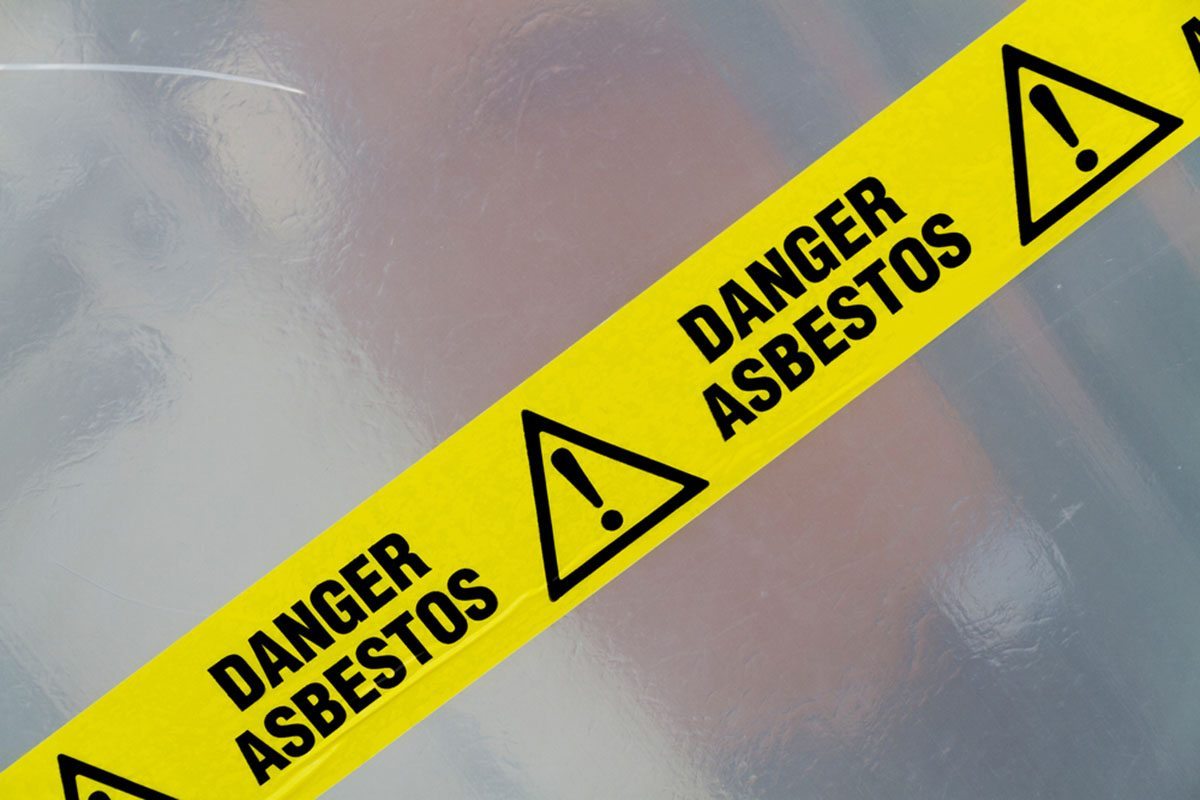Category: For Your Family

“Ring of Theory”
When a friend or family member is diagnosed with mesothelioma, knowing what to say to them is critical. Jennifer Gelsick, whose father is fighting the disease, offered some suggestions about saying the right thing like ensuring what you say “comes from the heart.” Now, a clinical psychologist offers the “Ring of Theory” as a guideline when communicating to mesothelioma patients and others who are facing a debilitating disease or other serious medical condition.
In an April Op-Ed in the Los Angeles Times, Susan Silk proposes using a series of concentric circles as a “simple technique” to help people avoid the mistake of saying the wrong thing. The theory being that the patient has the right to say anything he or she would like. As Silk explains, the patient “can kvetch and complain and whine and moan and curse the heavens.” But, anyone else talking to the patient or close family member needs to consider “if what you are about to say is likely to provide comfort and support.”
Mesothelioma is a scary disease, and dealing with the treatments, such as chemotherapy and radiation, are challenging. During this time, patients and caregivers are under a lot of stress and the more help you can provide the better. Sometimes listening is better than saying the wrong thing.
To build the ring, write the patient’s name in the center of a piece of paper and draw a circle around it. Next, write the name of the person closest to the patient outside that circle, such as the spouse or child, and draw another circle. Continue adding names and circles until you have a “kvetching order,” as Silk calls it, with those closest to the patient in the smaller, inner rings, and friends and colleagues in the larger, outer rings.
Saying things like, “I don’t know if I can handle this,” to the spouse of someone who may have a terminal diagnosis, is not helpful, and is inappropriate, according to Silk. The spouse needs someone to offer comfort, and does not want to offer comfort to someone else. Although you may be upset, discuss your feelings with someone in the outer circles and farther removed from the trauma.
“Remember, you can say whatever you want if you just wait until you’re talking to someone in a larger ring than yours,” said Silk.

Nurturing Weekend Retreat for Mesothelioma Patients and Their Families
When dealing with any kind of cancer, especially a rare cancer such as mesothelioma, patients and their families often need emotional support as they come to terms with the diagnosis. While support groups are helpful, they often meet for just one hour weekly or sometimes less often. The Living Well With Cancer weekend workshop, however, offers cancer patients three days of nurturing and healing.
The Living Well conference is held August 16-18 at the Omega Institute in Rhinebeck, New York in the Hudson Valley. The lineup of presentations and sessions offer attendees information designed to “educate, and empower you on your cancer journey as you learn how to take care of your body while honoring and embracing all aspects of your humanity,” according to the website.
Presenters during the event include:
- Jeffrey Geffen, oncologist, author of The Journey Through Cancer: Healing and Transforming the Whole Person and the founder of Geffen Visions International, Inc. Geffen developed The Seven Levels of Healing.
- Kathy LaTour, breast cancer survivor, author and performer of her one-woman show, One Mutant Cell.
- Sandra Gilbert, yoga professional and coordinator for YCat: Yoga Therapy in Cancer and Chronic Illness.
- Sharon A. Bray, EdD, writer, educator, and author of two books on writing and health, When Words Heal: Writing Through Cancer and A Healing Journey: Writing Together Through Breast Cancer.
During the two and one-half day conference, attendees will have the opportunity to participate in yoga sessions, and group walks. They will be entertained by comedian Scott Burton, and Kathy LaTour as she performs “One Mutant Cell.” Most importantly, though, cancer patients will learn skills “that create a high-quality life while living with cancer and afterward.”
Mesothelioma is an incurable cancer of the lining of the lungs, abdomen or heart caused by past exposure to asbestos. Nearly 3,000 Americans are diagnosed with the cancer each year. Research has shown that patients who focus on the power of the mind-body connection and choose to be optimistic and positive will realize a higher quality of life and may respond better to treatments. In addition, cancer patients who practice yoga and stay active by walking and getting outside are shown to have less stress and anxiety than those who remain sedentary.
The organizers of the weekend realize that the financial commitment for an event like this may prevent some cancer patients from attending. As a result, tiered pricing is available to help make this affordable for all.
See the Living Well With Cancer website for pricing and registration information.

Do-It-Yourself Home Renovators Urged to be Cautious Around Mesothelioma-Causing Asbestos
The National Safety Council has designated June National Home Safety Month. The organization offers the safety month as a time “to educate and influence behaviors around leading causes of preventable injuries and deaths.” This year’s theme, “Safety Starts with Me,” is especially pertinent for do-it-yourselfers who are at risk for exposure to asbestos. The U.S. Environmental Protection Agency has said, “Asbestos is a human carcinogen with no safe level of exposure.”
Asbestos is known to cause mesothelioma, lung cancer, asbestosis and other respiratory diseases. Mesothelioma and other asbestos-related diseases are entirely preventable by eliminating unsafe asbestos-handling practices. Although most home products today do not contain asbestos, until the 1970s, many types of building products and insulation materials used in home construction contained asbestos. So it’s not uncommon for older houses to have some asbestos.
Common products include steam pipes and furnace ducts insulated with an asbestos blanket or asbestos paper tape, vinyl asbestos floor tiles, soundproofing or decorative material sprayed on walls or ceilings, and asbestos cement roofing shingles.
When asbestos is present in structures it often does not present a hazard unless it is disturbed, causing the fibers to become airborne. When the fibers are breathed into the lungs, they then become lodged in the thin membrane that lines and encases the lungs, leading to respiratory diseases. As a result, it is important for homeowners to be educated about asbestos and to know where to look for information.
The British Lung Foundation (BLF) offers the following questions to ask yourself to avoid exposure to asbestos before beginning any DIY project:
- What is asbestos?
- Where and when was asbestos used?
- What does asbestos look like?
- What if I find asbestos in my home?
- Where can I get all the facts?
Answers to all of these questions can be found on the BLF website.
http://www.blf.org.uk/Home
In 2011, researchers in Australia reported there is an increase in the number of mesothelioma diagnoses and other asbestos-related diseases among do-it-yourself (DIY) home renovators. However, DIYers can take steps to avoid potentially dangerous exposure.
When planning on making renovations or changes to a house that could cause asbestos fibers to be released into the air, it is essential to have a trained professional either encapsulate or remove the asbestos materials first. Asbestos professionals can conduct home inspections, take samples of suspected asbestos material, and design corrective action plans for homeowners.
Close to 3,000 Americans die from the cancer yearly, and just as many are diagnosed with the disease. Although there is no cure for mesothelioma, it can be treated with varying degrees of success through surgery, chemotherapy and radiation.
To find out more about National Home Safety Month visit the National Safety Council’s website.
Sources:
- National Home Safety Month
http://www.nsc.org/act/events/Pages/national-safety-month.aspx - (2011, researchers in) Australia
https://www.mja.com.au/journal/2011/195/5/increasing-incidence-malignant-mesothelioma-after-exposure-asbestos-during-home

Mesothelioma Survivor Weighs in on Being Her Own Advocate
During my long journey of battling mesothelioma I have had to be my own advocate on many occasions. I had to first find a specialist who would help me deal with my war against mesothelioma, and then I had to decide if this was the treatment path to follow.
In an ideal world, it would be wonderful to have a team of specialists behind you, giving you the advice you need to make that informed decision about what to do next. It seems though, that while some doctors want to take full lead on treatment paths, others do not. It also seems apparent that while the older generation believes they should do what the doctor says, the younger generation questions more about what the treatments can offer. In some cases, doctors do step back and allow the patient to take more control over what treatment they wish to take, and they will help them through their journey no matter where it takes them.
Having mesothelioma is not only mentally tiring to the patient but also to their families. I have discovered through friends that are dealing with a mesothelioma diagnosis, if a man is the patient, it is often his wife and daughters who are searching the internet and asking the questions on forums to find out what treatments are available, and where the specialists are. Hence, they sometimes take the role of lead decider or advocate.
When it is the woman fighting, in my opinion, we seem to want to take total control. We also ask the questions that maybe we don’t always want to hear the answers to.
It can be daunting taking control of how you will fight a cancer that you know will ultimately win, but seeking as much information as you can about all treatments should always be the first step. Take time to consider the options given.
Taking control of your destiny in illness is extremely hard. Many times I have gone back over things and wondered what if I had done this first or tried that. Whatever we have done or tried, we can’t turn the clock back and we have to face our decisions full on. I have found I still question some of the options I have taken, and all I can do is hope they were the right ones for me.
There are no easy answers in how to deal with treatment or how we control our own destiny when fighting the mesothelioma war, all we can do is hope the choices we make or the direction given by our specialist is right for us.

Mesothelioma Patients Face Risk of Bankruptcy
Early last month we reported that doctors across the country have joined forces in calling for pharmaceutical companies to lower the cost of some cancer drugs. Also cited in that article were statistics from a study that found 30% of cancer patients reported that their medical expenses were a “significant burden,” and 11% called them a “catastrophic problem.” Mesothelioma and cancer patients are being strapped with higher and higher medical expenses, and sadly, they are susceptible to going bankrupt from those costs.
Mesothelioma patients are faced with many challenging issues after they are diagnosed with the incurable, asbestos-related cancer. Determining where to receive their medical care, what treatments to use to fight the disease and how to cope with the symptoms are stressful enough, but many patients quickly realize that the financial aspect of the disease will significantly add to their stress.
In a recent study from the Fred Hutchinson Cancer Research Center in Seattle, researchers set out to understand the relationship between receiving a cancer diagnosis and filing for bankruptcy. The impact medical expense-related debt has on cancer patients was revealed:
“The researchers found that cancer patients were 2.65 times more likely to go bankrupt than people without cancer. Bankruptcy rates were two to five times higher among younger cancer patients compared to cancer patients age 65 years or older, which indicates that Medicare and Social Security may mitigate bankruptcy risk for the older group.”
The researchers, led by Scott Ramsey, M.D., Ph.D, analyzed medical, personal, legal, and bankruptcy records covering the Western District of Washington State in U.S. Bankruptcy Court from 1995 to 2009. They concluded that “employers and governments may have a policy role to play in creating programs and incentives that could help people cover expenses in the first year following a cancer diagnosis.”
According to a separate study conducted by researchers at the National Cancer Institute, the cost of cancer care in the United States is expected to rise from an estimated $125 billion in 2010 to $158 billion by the year 2020. Some patients are forced to end treatments early due to their inability to afford further care. Others continue to build debt until they are left wondering how they will cover the bills.
Know more about mesothelioma and how you can deal with it.
Free Mesothelioma Patient & Treatment Guide
We’d like to offer you our in-depth guide, “A Patient’s Guide to Mesothelioma,” absolutely free of charge.
It contains a wealth of information and resources to help you better understand the condition, choose (and afford) appropriate treatment, and exercise your legal right to compensation.
Download Now